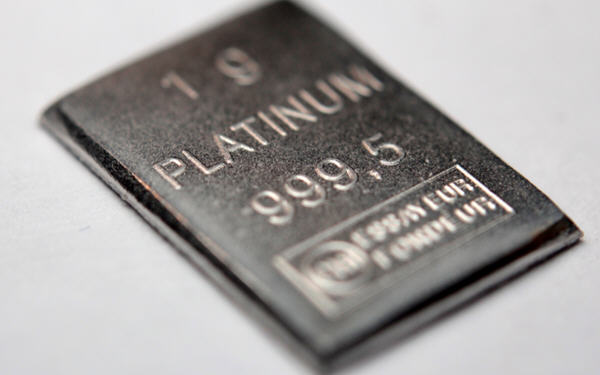
For precious metals, gold has always been the shining star, attracting more interest than almost all other precious metals combined. Historically, however, platinum hit a record high of $2,290 per ounce in March 2008, only to shine much less brightly over the past fifteen years.
Gold and platinum have moved in roughly the same direction for quite some time, and even at essentially the same price for a period of time. But in the last decade, platinum prices have been oscillating sideways, widening the gap with gold further. Today, platinum only trades $968 per ounce, less than half the price of gold.
Even when compared to silver, a relative underperformer among precious metals, platinum is in an awkward position. In 2014, for example, one ounce of platinum could buy 145 ounces of silver. Today, that same ounce of platinum can only buy 33 ounces of silver. In other words, platinum prices have never been cheaper than they are today when compared to other precious metals.
So, is there an undervaluation of the platinum price, and will a recovery from traditional and new industrial demand drive the price out of its long slump? The answer is yes.
Firstly, we know that the largest demand for platinum comes from the automotive industry. Last year, 42% of global platinum supply was consumed by the automotive sector, with a variety of other industrial uses consuming 30% of supply and jewellery manufacturing consuming around 26% of supply.
According to the World Platinum Investment Council (WPIC), with the addition of investment demand, platinum demand from all sources exceeded global supply by 851,000 ounces last year.The WPIC expects the supply gap to exceed 500,000 ounces in each of the next four years.
If this forecast is close to reality, then platinum prices should rise sharply over this period. And slower growth in demand for electric vehicles could be one of the main reasons for higher platinum prices.
Unlike internal combustion engine (ICE) vehicles, electric cars do not require catalytic converters treated with platinum or palladium to clean the exhaust. As a result, each additional new electric car on the road means there will be less demand for platinum.
However, electric cars have not conquered the global automotive market as quickly as many expected. The latest data show that in the North American market, in the first quarter of 2024, electric car sales fell 15.2 per cent compared to the previous quarter, losing market share to internal combustion engine vehicles for the first time in four years.
Tesla’s sales in the US continued to fall 11.6 per cent in May, which is good news for the platinum market. As platinum prices have fallen to record lows, some manufacturers are replacing palladium with platinum in petrol cars. This demand trend alone is enough to drive platinum prices up significantly.
On top of that, the currently hot field of artificial intelligence is also a boon for platinum. Prior to this, electronics and technology end-use accounted for only 3 per cent of total platinum demand. But thanks to AI, the tech sector is likely to see double-digit growth in platinum consumption for several years in a row.
According to Metals Focus, the surge in demand for AI applications will lead to a surge in demand for high-specification semiconductors and sensors that will enable AI technology to operate optimally. And most of this next-generation hardware contains platinum.
While AI-driven platinum demand won’t be able to lead this long-sleeping precious metal into a new bull market on its own, it could still add a dash of colour to any bull market that may emerge.